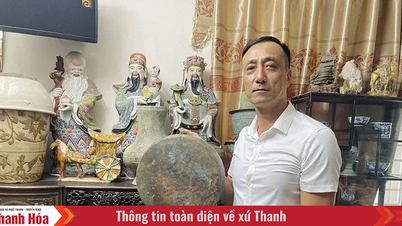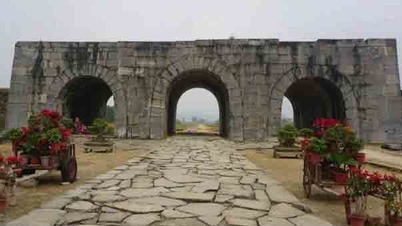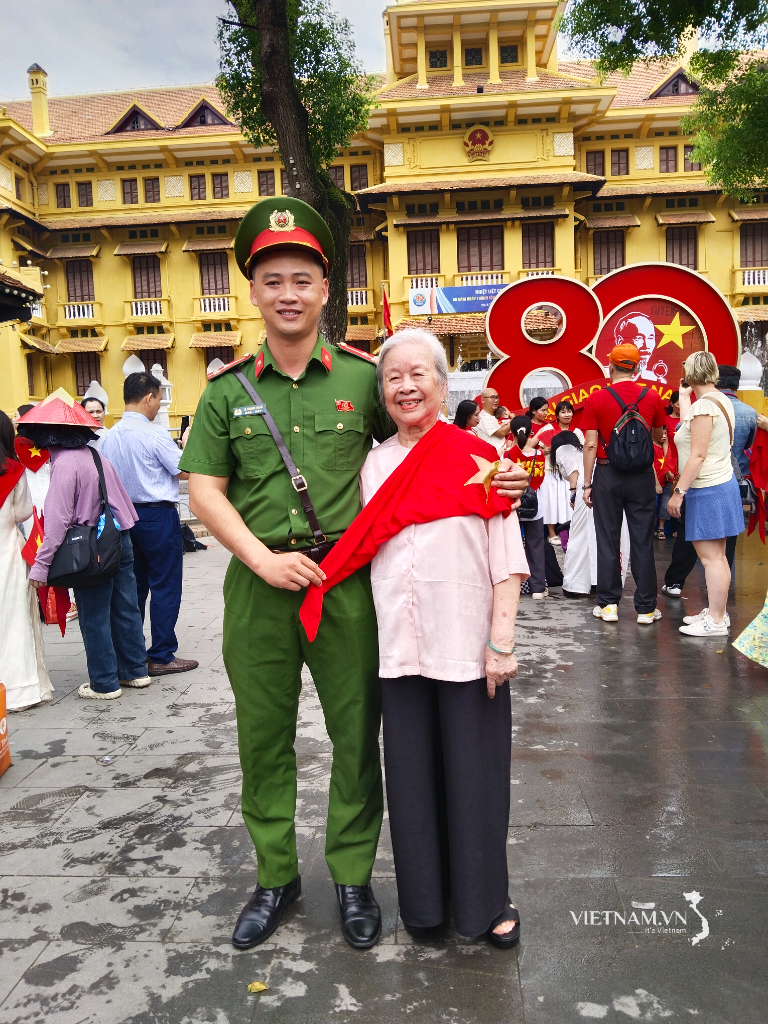According to Mr. Do Van Bao, Math teacher at Vinschool Inter-level High School, teacher of Tuyen sinh247, the official entrance exam for grade 10 Math in the 2025-2026 school year has changed its structure according to the new program but does not surprise candidates as it still follows the program and is similar to the sample exam previously announced by the Hanoi Department of Education and Training.
Compared to last year's exam, this year's Math exam has changed completely when adding a topic on data statistics and probability and grouping related knowledge into large topics.
Although the general structure remains unchanged, there are still 5 large sentences, but each sentence is a group of related knowledge topics, helping students to conveniently think about doing the test using the same knowledge flow.
Each big question is a group of knowledge topics such as: Data statistics and Probability; Expressions and related problems; Solving problems by setting up equations, systems of equations and applying Viète's Theorem; Geometry of space and circles; Practical problems related to extreme values.
“The test is consistent with the spirit of the 2018 general education program, with more than 50% of the test materials originating from real-life problems, such as score statistics tables, revenue production problems, and familiar spatial geometry problems in architecture or industry. Students need to apply calculation skills or create equations, solve equations, and then draw conclusions about real-life problems,” commented Mr. Do Van Bao.
In particular, in the last question, there is a clear change compared to previous years' questions in a positive direction. The question does not start from a hypothesis with numbers, variables, letters, and dry expressions to find the largest or smallest value, but starts from a very practical problem for transportation businesses, requiring students to think of modeling into a problem, solving the problem and drawing conclusions.
“The exam is moderately difficult, the questions are clear, direct, and not complicated or difficult to understand. The questions that differentiate points are questions IV 2c and question V. There are some highly differentiated questions, so not many students will get 10 points,” the teacher analyzed.
According to teacher Do Van Bao, this year's 10th grade entrance exam in Hanoi has some outstanding features when grouping topics into large sentences. Each large sentence is no longer a collection of separate ideas but is designed in clusters of close topics, logically linked in terms of knowledge and skills.
In addition, the advanced problems bear the mark of breakthroughs and innovative approaches. Unlike previous years, this year's problems for classifying gifted students do not follow familiar directions such as finding the maximum/minimum value of an expression, or proving inequalities - which are highly technical problems but far from practical applications.
This year, the high-level application problem is a real-life situation related to the production-profit optimization problem, requiring students to model, create algebraic formulas from the context, analyze conditions and explain with reasonable mathematical reasoning. Teacher Do Van Bao analyzed and said that this is a clear message: Mathematics is not only for studying, but also for solving life problems.
Specific comments on each sentence are as follows:
Question I: Focus on new knowledge - Data statistics and probability. This is the first time this content appears in the official exam, but the questions are clear, not tricky, and students have been exposed to and practiced a lot in the program. For students who study seriously, it is completely possible to achieve maximum score.
Question II: Knowledge of algebraic expressions and expression transformations, including expressions containing radicals. This is a familiar type of question, found in most exams and tests during the year. Point 3 requires reverse thinking from given conditions - a familiar type of question for good and excellent students and is completely feasible.
Question III: This is a group of problems solved using equations, systems of equations and applying Viete's Theorem. Questions 1 and 2 are familiar types of problems that students can solve if they have a firm grasp of the skills of creating equations from real-life situations. Question 3 uses Viete to find parameters from the conditions of two solutions - requiring students to process asymmetric expressions and then convert them to symmetric forms to apply the formula - this is a subtlety in test construction, helping to classify students.
Question IV: Part 1 is a spatial geometry problem with a cylinder – requiring calculation of lateral area and volume. This is a common type of problem in practice tests, students only need to remember the formula to be able to do it correctly.
Part 2 is part of Plane Geometry - inscribed circle and elements such as height, inscribed quadrilateral, angle bisector. Average students can complete up to part b1. Part b1-b2-c are highly connected, students need to know how to exploit data from previous parts to serve arguments and proofs. Average students can solve part b1; good students may get stuck and waste time on part c of the geometry problem, some really good students will be able to solve the whole geometry problem.
Question V: This is a very practical extreme problem - closely reflecting the reality of businesses in optimizing profits when expanding their scale. This is the highlight of the problem. Different from the traditional dry way of giving questions (given an expression, finding the largest value/smallest value), the problem is placed in a close and practical context, forcing students to understand the nature, model the problem, establish a formula and then analyze to draw conclusions. Even if students do not complete the problem completely, understanding the problem has contributed to developing mathematical thinking associated with life.
Master Trinh Thu Van, Head of the Math Group at Hoa Binh-La Trobe High School in Hanoi, also said that there was something new in this year's Math exam when there was an additional knowledge content: Probability-Statistics, however, with questions about basic knowledge, students can easily get points.
"The test ensures the classification of students, the questions have different levels of cognition: recognition, understanding, application, and some questions have a high level of difficulty to classify good and excellent students, as in 2c, Question 4 and Question 5", commented Master Trinh Thu Van.
Mr. Le Ngoc Dien, a Math teacher at HOCMAI Education System, said that the 2025 Math exam for grade 10 in Hanoi will promote students' mathematical thinking and practical problem-solving skills.
The knowledge content in the exam includes 3 knowledge streams: Numbers and Algebra, Geometry and Measurement, Statistics and Probability, closely following the 2018 General Education Program. The types of questions and the difficulty of the questions in the exam closely follow the sample exam that the Department has announced. This helps candidates not to be confused, to do the test with a proactive and confident mindset. The increase in questions related to practical applications aims to test students' reading comprehension and mathematical modeling ability; thereby classifying candidates.
"This is a test that is both in-depth and has a clear educational orientation, contributing to improving the quality of teaching Math at secondary school level, and is also a reliable basis for high schools to select suitable students," said Mr. Le Ngoc Dien.
Source: https://nhandan.vn/de-toan-vao-lop-10-co-su-doi-moi-tich-cuc-ve-ca-hinh-thuc-va-noi-dung-post885371.html




![[Photo] General Secretary To Lam chaired the Politburo's working session with the Standing Committees of Party Committees of Central Party agencies.](https://vphoto.vietnam.vn/thumb/1200x675/vietnam/resource/IMAGE/2025/9/9/8343386e1e8f43c6a3c0543da7744901)



![[Photo] Politburo works with the Standing Committees of Vinh Long and Thai Nguyen Provincial Party Committees](https://vphoto.vietnam.vn/thumb/1200x675/vietnam/resource/IMAGE/2025/9/8/4f046c454726499e830b662497ea1893)





















![[Photo] Politburo works with the Standing Committees of Dong Thap and Quang Tri Provincial Party Committees](https://vphoto.vietnam.vn/thumb/1200x675/vietnam/resource/IMAGE/2025/9/8/3e1c690a190746faa2d4651ac6ddd01a)
![[Photo] Politburo works with the Standing Committees of Phu Tho and Dong Nai Provincial Party Committees](https://vphoto.vietnam.vn/thumb/1200x675/vietnam/resource/IMAGE/2025/9/8/f05d30279b1c495fb2d312cb16b518b0)


































































Comment (0)